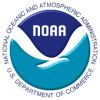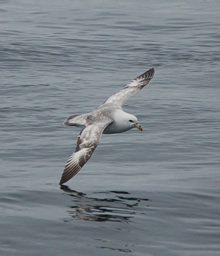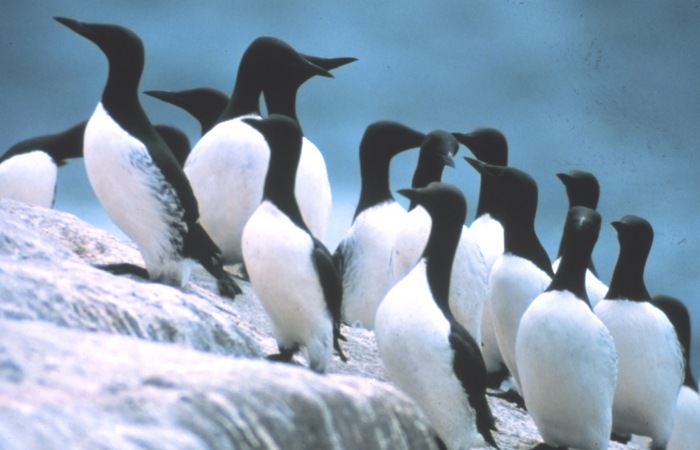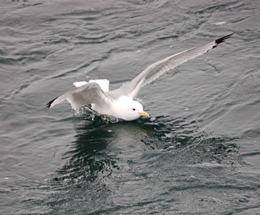
|

|
| Home | Daily Log | the Research | Images and Video | Maps | Data | Q&A | Links |
| Introduction | Physical Oceanography | Nutrient Chemistry | Phytoplankton | Zooplankton | Acoustics/Fish | Seabirds | Marine Mammals |


Bering Sea Ice Expedition Research Activities - Seabirds |
||||||
|
Seabirds are important and conspicuous upper-trophic marine predators, consuming a variety of larval, juvenile
and adult fish (age-0 pollock, myctophids), zooplankton (euphausiids, copepods), and squid. In the North Pacific
Ocean, seabirds exhibit a broad range of life histories, from the deep-diving murres to the surface-feeding
albatrosses. They occupy a variety of habitats, with different species assemblages inhabiting distinct tropical
and sub-arctic ocean regions. The broad range of seabird life-styles is illustrated by their large range
in body size, from the small-sized storm-petrels (45 g in weight, with a wing span of 21 cm) to the large
albatrosses (3,400 g in weight, with a wing span and of over 180 cm).
An estimated 20 million seabirds breed in the Bering Sea (U.S. Fish and Wildlife Beringian Seabird Colony Catalog),
and 20-30 million join in an annual spring/summer migration from
distant locations to take advantage of the high productivity of this
area. Some travel from as far away as Tasmania in the southern
hemisphere. Other seabird species migrate through the Bering Sea on
their way to breeding grounds in the Arctic (see Conservation of Arctic Flora and Fauna).
Visit these links to learn more about Alaskan seabirds: Alaska Maritime National Wildlife Refuge Birds area and
U.S. Geological Survey Seabirds site
Even though seabirds are numerous
in the Bering Sea, little is known about how they use the ice-edge environment. Do some spring visitor species feed along the ice edge to take advantage of local prey
concentrations? Do some migrating species concentrate at the ice edge, waiting for it to retreat northwards?
Are some parts of the ice edge, like the leads (large "veins" or "branches" of
open water that cut into the sea ice and extend many kilometers), more
important for foraging and migrating seabirds?
Where seabird studies have been
conducted in the Arctic and the Antarctic, researchers have found that
many species concentrate in the marginal ice zone (the transition between
open and ice-covered waters) to forage and wait for the sea ice to
open up so they can continue their seasonal migration. We expect to find major
concentrations of seabirds along the Bering Sea ice-edge habitat, but what species will be present, where they will aggregate, and what prey will be available to them? To an swer these
questions, we will count birds from the bridge of the ship while we sail along transects running
from the open water towards the ice edge. Stay tuned to find out
what stories the birds have to tell. |
||||||
| Privacy | Disclaimer | Accessibility | Contact Us |


